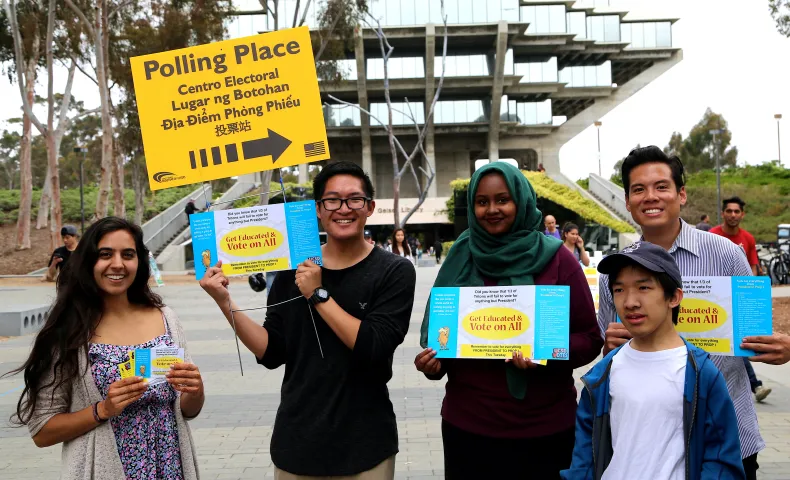 Photo by Adriana Zuniga
Photo by Adriana Zuniga
Drawing the Lines in this Important Time
The attempted recall of the California governor, initiated by a small minority of voters, has understandably drawn a great deal of attention and resources this year. But the special election is not the only event that will have huge political and policy consequences for years to come. Later this year, residents and government bodies across California will begin the process of redrawing political district lines based on data from the 2020 Census. The redistricting process is essential to the functioning of democracy, and it plays a critical role in the distribution of political power. Given the high stakes, the Haas, Jr. Fund is working with partners to help make sure that all communities, and especially communities of color, have a voice in the process.
Why Redistricting Matters
The boundaries drawn this year will last a decade, and where they are drawn makes a huge difference. For example, the lines of a political district can determine whether a community has opportunities to vote together to elect candidates who represent their interests, or whether they are divided up in ways that dilute their influence and their collective voice. Challenging redistricting decisions in court after the fact is a slow, expensive process. That makes it even more important to engage people and communities during the process, so they can help make sure it’s fair.
The line drawing process is full of challenges. To begin with, redistricting can be complicated and highly technical. And because it happens only every 10 years, communities rarely have built-in expertise on how to advance and protect their interests. But with the lines of hundreds of political jurisdictions set to be redrawn—from state senate districts with nearly a million residents to local districts for city councils and school boards—people and communities across our state need to be ready to play an active role.
Adding Fairness to the Process
At the state level, an independent commission has responsibility for drawing new lines for congressional seats, as well as state senate and assembly seats. Locally, a handful of large cities and counties are using independent commissions as well. But in most local jurisdictions, redistricting decisions will be in the hands of elected politicians, which creates the possibility for conflicts of interest as they jockey to try and protect their seats.
Adding to the challenges this year, delays in the 2020 Census meant that states had to wait months longer than planned to get the data they need to draw the new maps. This has put increased pressure on jurisdictions to draw lines quickly and potentially to cut corners when it comes to transparency, public education, and opportunities for public input.
Meanwhile, hundreds of jurisdictions are also facing their first redistricting process since shifting from at-large to district elections under a statewide push to increase the voting power of minority communities. Many cities and school districts resisted district elections in an effort to protect the political status quo—so it’s going to be especially important to make sure redistricting in those places is handled fairly and equitably.
Grassroots Groups Leading the Way
Across California, grassroots power-building organizations, good-government groups, voting rights experts, and others are working at the state and local levels to spur active resident engagement in this critical process. These organizations are educating communities about the process, providing trainings, offering technical advice, and advocating for a fair and transparent process. They’re also working to build coalitions among underrepresented communities so they can make a unified case for a fair and equitable process.
The Haas, Jr. Fund is honored to be working with many of these groups across our home state to make redistricting a success. We look forward to a process that protects and advances the power and representation of communities that for too long have been locked out of government and politics—so that everyone can have a voice.
Please reach out if you’d like to learn more or have ideas about how the redistricting process can be improved.